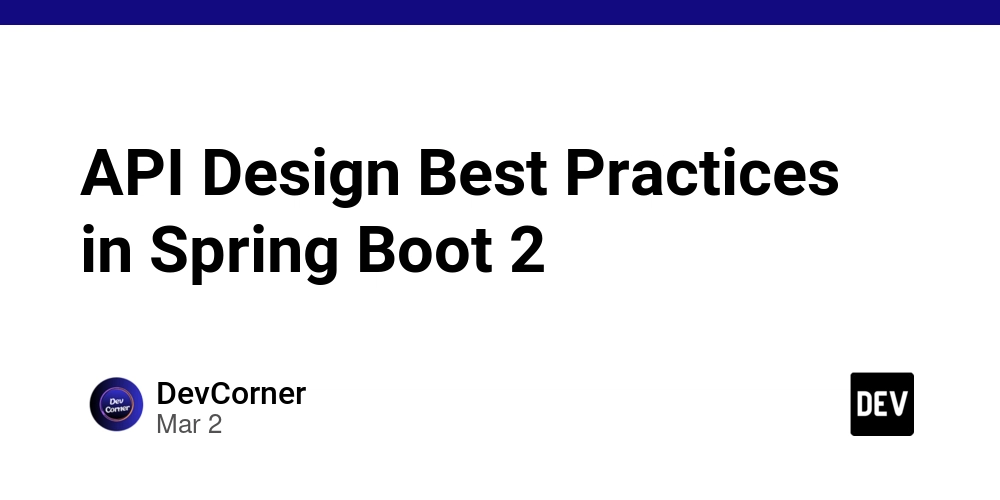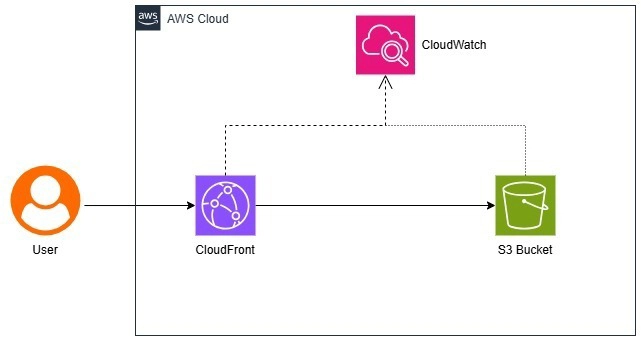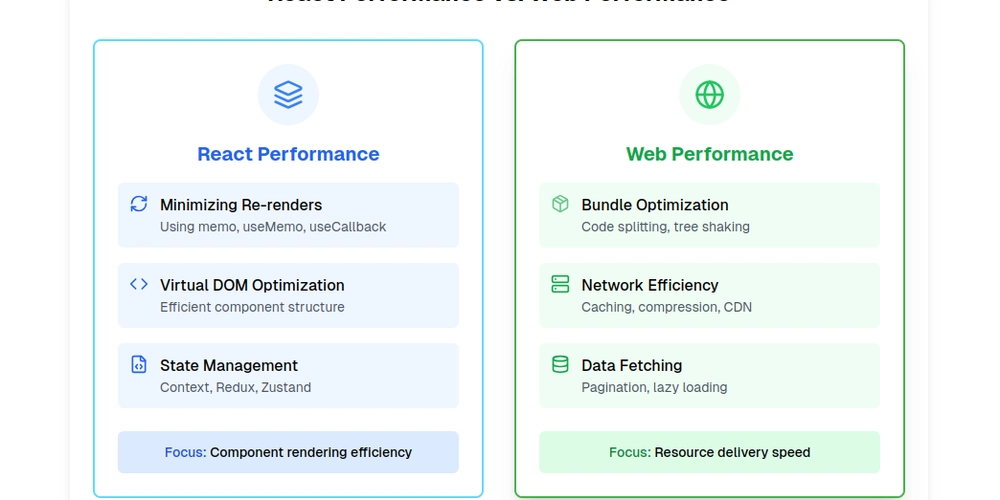API Design Best Practices in Spring Boot 2
Designing RESTful APIs is a crucial aspect of building scalable and maintainable applications. In this blog, we will explore best practices for API design using Spring Boot, with practical examples and code snippets. 1. Accept and Respond with JSON By default, Spring Boot APIs should accept and respond with JSON. Implementation: @RestController @RequestMapping(value = "/users", produces = MediaType.APPLICATION_JSON_VALUE) public class UserController { @GetMapping("/{id}") public ResponseEntity getUser(@PathVariable Long id) { User user = userService.getUserById(id); return ResponseEntity.ok(user); } } 2. Use Nouns Instead of Verbs in Endpoint Paths Good: GET /users POST /users DELETE /users/{id} Bad: GET /getUsers POST /createUser DELETE /removeUser/{id} Following RESTful principles improves API consistency. 3. Name Collections with Plural Nouns Example: @GetMapping("/orders") public List getAllOrders() { return orderService.getAllOrders(); } Use /orders instead of /order for collections. 4. Nesting Resources for Hierarchical Objects For related entities, use nested URLs. Example: @GetMapping("/users/{userId}/orders") public List getUserOrders(@PathVariable Long userId) { return orderService.getOrdersByUserId(userId); } 5. Handle Errors Gracefully and Return Standard Error Codes Using @ControllerAdvice for global error handling: Implementation: @RestControllerAdvice public class GlobalExceptionHandler { @ExceptionHandler(UserNotFoundException.class) public ResponseEntity handleUserNotFound(UserNotFoundException ex) { return ResponseEntity.status(HttpStatus.NOT_FOUND).body(ex.getMessage()); } } 6. Allow Filtering, Sorting, and Pagination Spring Data JPA provides built-in support. Implementation: @GetMapping("/users") public Page getUsers( @RequestParam(defaultValue = "0") int page, @RequestParam(defaultValue = "10") int size, @RequestParam(defaultValue = "id,asc") String sort) { Pageable pageable = PageRequest.of(page, size, Sort.by(sort.split(","))); return userRepository.findAll(pageable); } Pagination Response Format: Spring Boot provides pagination metadata automatically. { "content": [...], "pageable": {...}, "totalPages": 5, "totalElements": 50, "size": 10, "number": 1 } 7. Maintain Good Security Practices JWT Authentication: Rate Limiting: Validation to prevent SQL Injection: Example: @Validated @PostMapping("/users") public ResponseEntity createUser(@Valid @RequestBody User user) { return ResponseEntity.ok(userService.save(user)); } 8. Cache Data to Improve Performance Example: @Cacheable("users") @GetMapping("/users/{id}") public User getUser(@PathVariable Long id) { return userService.getUserById(id); } 9. Versioning Our APIs Example (Path Versioning): @RestController @RequestMapping("/api/v1/users") public class UserControllerV1 { @GetMapping("/{id}") public ResponseEntity getUser(@PathVariable Long id) { return ResponseEntity.ok(userService.getUserById(id)); } } Other versioning strategies include Query Parameters (/users?version=1) and Header-based versioning. Conclusion Following these best practices ensures robust API design, improving performance, security, and maintainability. Would you like to explore more advanced API design topics? Let me know!

Designing RESTful APIs is a crucial aspect of building scalable and maintainable applications. In this blog, we will explore best practices for API design using Spring Boot, with practical examples and code snippets.
1. Accept and Respond with JSON
By default, Spring Boot APIs should accept and respond with JSON.
Implementation:
@RestController
@RequestMapping(value = "/users", produces = MediaType.APPLICATION_JSON_VALUE)
public class UserController {
@GetMapping("/{id}")
public ResponseEntity<User> getUser(@PathVariable Long id) {
User user = userService.getUserById(id);
return ResponseEntity.ok(user);
}
}
2. Use Nouns Instead of Verbs in Endpoint Paths
Good:
GET /usersPOST /usersDELETE /users/{id}
Bad:
GET /getUsersPOST /createUserDELETE /removeUser/{id}
Following RESTful principles improves API consistency.
3. Name Collections with Plural Nouns
Example:
@GetMapping("/orders")
public List<Order> getAllOrders() {
return orderService.getAllOrders();
}
Use /orders instead of /order for collections.
4. Nesting Resources for Hierarchical Objects
For related entities, use nested URLs.
Example:
@GetMapping("/users/{userId}/orders")
public List<Order> getUserOrders(@PathVariable Long userId) {
return orderService.getOrdersByUserId(userId);
}
5. Handle Errors Gracefully and Return Standard Error Codes
Using @ControllerAdvice for global error handling:
Implementation:
@RestControllerAdvice
public class GlobalExceptionHandler {
@ExceptionHandler(UserNotFoundException.class)
public ResponseEntity<String> handleUserNotFound(UserNotFoundException ex) {
return ResponseEntity.status(HttpStatus.NOT_FOUND).body(ex.getMessage());
}
}
6. Allow Filtering, Sorting, and Pagination
Spring Data JPA provides built-in support.
Implementation:
@GetMapping("/users")
public Page<User> getUsers(
@RequestParam(defaultValue = "0") int page,
@RequestParam(defaultValue = "10") int size,
@RequestParam(defaultValue = "id,asc") String sort) {
Pageable pageable = PageRequest.of(page, size, Sort.by(sort.split(",")));
return userRepository.findAll(pageable);
}
Pagination Response Format:
Spring Boot provides pagination metadata automatically.
{
"content": [...],
"pageable": {...},
"totalPages": 5,
"totalElements": 50,
"size": 10,
"number": 1
}
7. Maintain Good Security Practices
- JWT Authentication:
- Rate Limiting:
- Validation to prevent SQL Injection:
Example:
@Validated
@PostMapping("/users")
public ResponseEntity<User> createUser(@Valid @RequestBody User user) {
return ResponseEntity.ok(userService.save(user));
}
8. Cache Data to Improve Performance
Example:
@Cacheable("users")
@GetMapping("/users/{id}")
public User getUser(@PathVariable Long id) {
return userService.getUserById(id);
}
9. Versioning Our APIs
Example (Path Versioning):
@RestController
@RequestMapping("/api/v1/users")
public class UserControllerV1 {
@GetMapping("/{id}")
public ResponseEntity<User> getUser(@PathVariable Long id) {
return ResponseEntity.ok(userService.getUserById(id));
}
}
Other versioning strategies include Query Parameters (/users?version=1) and Header-based versioning.
Conclusion
Following these best practices ensures robust API design, improving performance, security, and maintainability.
Would you like to explore more advanced API design topics? Let me know!












































































































































































![[The AI Show Episode 142]: ChatGPT’s New Image Generator, Studio Ghibli Craze and Backlash, Gemini 2.5, OpenAI Academy, 4o Updates, Vibe Marketing & xAI Acquires X](https://www.marketingaiinstitute.com/hubfs/ep%20142%20cover.png)



























































































































![[FREE EBOOKS] The Kubernetes Bible, The Ultimate Linux Shell Scripting Guide & Four More Best Selling Titles](https://www.javacodegeeks.com/wp-content/uploads/2012/12/jcg-logo.jpg)



![From drop-out to software architect with Jason Lengstorf [Podcast #167]](https://cdn.hashnode.com/res/hashnode/image/upload/v1743796461357/f3d19cd7-e6f5-4d7c-8bfc-eb974bc8da68.png?#)





































































































.png?#)





.jpg?#)































_Christophe_Coat_Alamy.jpg?#)







































































































![Rapidus in Talks With Apple as It Accelerates Toward 2nm Chip Production [Report]](https://www.iclarified.com/images/news/96937/96937/96937-640.jpg)








































































































































